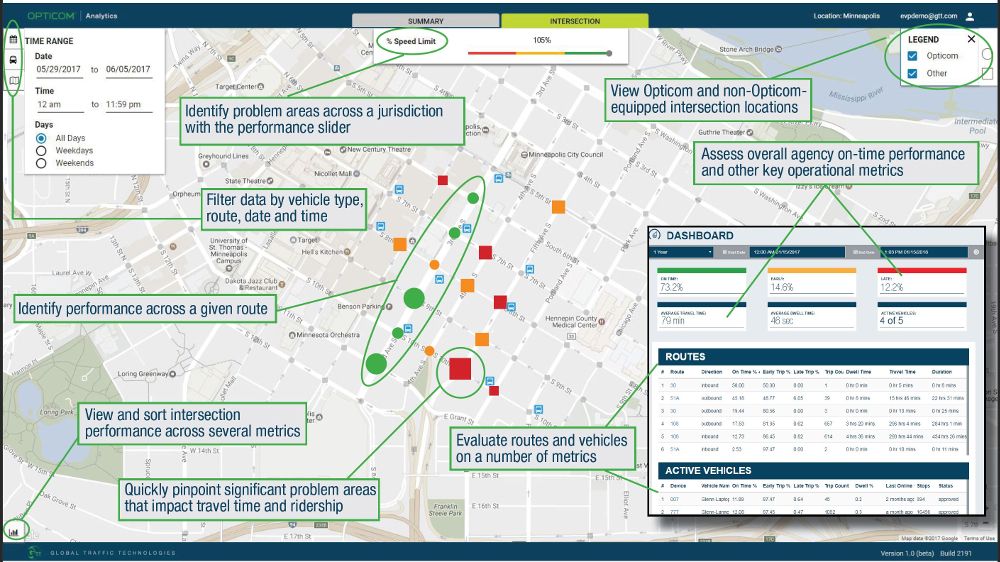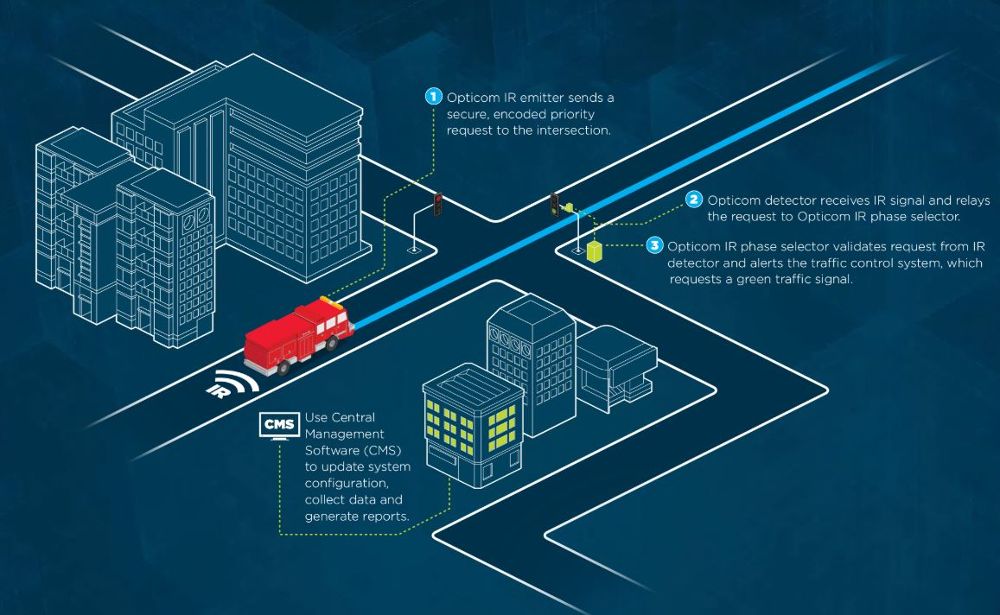One of the market leaders in emergency and transit vehicle priority control systems, Global Traffic Technologies (GTT) is launching a new traffic signal preemption solution designed especially for law enforcement agencies.
GTT is unveiling its new system at the International Association of Chiefs of Police Association’s (IACP) annual conference in Chicago from October 26-29. The Minnesota-based company is a leader for in-vehicle traffic management systems, having an installed base of more than 180,000 connected devices in over 3,100 municipalities worldwide, including 41 of the 50 largest cities in the USA. At IACP, GTT will explain how some law enforcement agencies are already making use of existing preemption infrastructure to respond to emergencies more quickly and safely. The company’s Opticom Emergency Vehicle Preemption (EVP) for law enforcement gives officers the green light at intersections, allowing them to safely and quickly respond to calls. According to the Federal Highway Administration (FHWA) studies, police officers can provide better outcomes thanks to response time reductions of up to 25% and reduced intersection crash rates of 70%.
GTT’s widely-used Opticom EVP systems have enabled first responders to preempt traffic signals for more than 50 years, but the company’s new offering for law enforcement agencies addresses concerns that many cities have had about how that preemption by police forces would impact everyday traffic. The new system for law enforcement considers Computer Aided Dispatch (CAD) data when determining if a preemption request will be made. Local agencies will have the flexibility to determine which types of calls will be given priority status. For example, some agencies might have a blanket policy where only the most serious calls would get pre-emption. Other cities might choose to allow officers to determine when preemption is necessary.
The Opticom EVP systems work alongside intersection traffic controllers to help ensure fire, police or medical emergency vehicles can move through junctions quickly and safely. When an emergency vehicle needs to navigate an intersection, the system on board the vehicle sends a request to the traffic control cabinet ahead of its arrival. GTT offers two variants of the EVP system to trigger intersection controllers. The Opticom IR platform uses coded infrared (IR) transmitters mounted on vehicles to provide secure line-of-sight communications with the traffic controller to request a temporary right of way.
 For more complex installations needing a system that can accommodate hills, curves and extended distances, GTT offers Opticom GPS, which uses Global Positioning System technology and highly-secure radio communications to activate signal pre-emption based on estimated time of arrival or distance. The company also offers a multimode system that is interoperable between IR and GPS equipment, offering a solution in larger areas where multiple jurisdictions may be using different types of priority control.
For more complex installations needing a system that can accommodate hills, curves and extended distances, GTT offers Opticom GPS, which uses Global Positioning System technology and highly-secure radio communications to activate signal pre-emption based on estimated time of arrival or distance. The company also offers a multimode system that is interoperable between IR and GPS equipment, offering a solution in larger areas where multiple jurisdictions may be using different types of priority control.
“The new solution was developed with input from dozens of agencies across the United States,” said GTT’s product manager, Chad Mack. “Over the past year, we’ve heard that many people think Opticom is just for fire or EMS users. The fact that we can assign priority based on incident type opens up new opportunities for law enforcement so that they can get the green light when they need it.”





